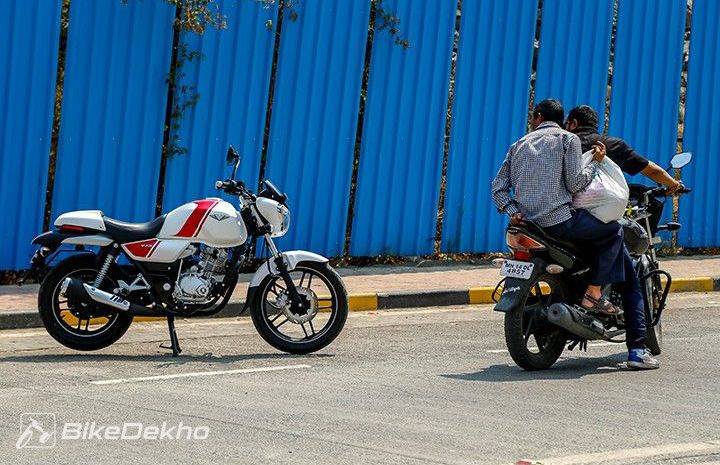Five Major Differences Between The Bajaj V15 and V12
Modified On Mar 20, 2019 01:28 PM By Naveen Sonifor Bajaj V15 Power Up
- 26596 Views
Besides the bigger engine, the Bajaj V12 also misses some of the key features of the V15. We take a look.

Bajaj has finally revealed the official spec sheet of its latest entrant in the commuter segment, the V12, priced at Rs 56,283 (ex-showroom, Delhi). Unveiled at the end of November 2016, the Bajaj V12 is based on the same robust platform that is used to build the first bike in the series, the V15. As most of our readers know, the bikes from the Bajaj V family fuse a small piece of metal from the first aircraft carrier warship of India, the INS Vikrant, in their fuel tank, thus adding a patriotic value with ownership of the motorcycle. As the names suggests, the V15 is a 150cc premium commuter, while the V12 comes in the 125cc segment and costs around Rs 6,000 less. But besides the engine capacity, there are some other major changes as well which might convince you to pay that extra amount of money to go for the elder sibling. So, let's have a look.
1. Engine:

Both the bikes sport a similar type of single-cylinder, four-stroke, air-cooled, two-valve, SOHC, DTS-i engine. However, the one fitted in the V12 has a displacement of 124.5cc, while the one in the V15 is bigger with a capacity of 149.5cc. It results in variations in both peak power and torque outputs. While the V15 offers a maximum power of 12PS and a peak torque of 13Nm, the motor in the V12 delivers 10.7PS and 11Nm respectively.
2. Front Suspension:

One of the key features Bajaj used to promote the V15 was the big 33mm front telescopic forks up front. By contrast, those on the V12 are slightly thinner. The assembly in the V12 seems to have an inner tube diameter of 31mm, however, the company has done a good job of hiding them with the fork boots.
3. Disc Brake:

The Bajaj V12 gets a 130mm drum brake unit each at the front and rear ends. On the other hand, the V15 comes equipped with a 240mm disc brake at the front as a standard fitment, endowing the bike with better stopping power.
4. Tyres:

Another key feature of the Bajaj V15 are its specially designed, meaty, dual-purpose, tubeless tyres. While it gets 120mm and 90mm section tyres at the rear and the front respectively, the V12 comes with skinnier 100mm rear and 70mm front tyres. Moreover, the V12 also misses out on tubeless tyres, which is a very important feature.
5. Headlight:

Bajaj provides a bright 55/60 W headlight in the V15 that provides impressive illumination even in the darkest conditions. Whereas, the new V12 gets a common 35/35 W headlamp like any other commuter.
Apart from these major changes, there are slight variations in the dimensions and reserve fuel level as well. One more thing that might convince you to go for the Bajaj V15 is the price, which is similar to most 125cc motorcycles from rival manufacturers. So, you can buy this 150cc bike by paying the same amount that you were going to pay for a 125cc product. Still, if you are planning for a 100-110cc motorcycle, the Bajaj V12 could be a better deal for you.
